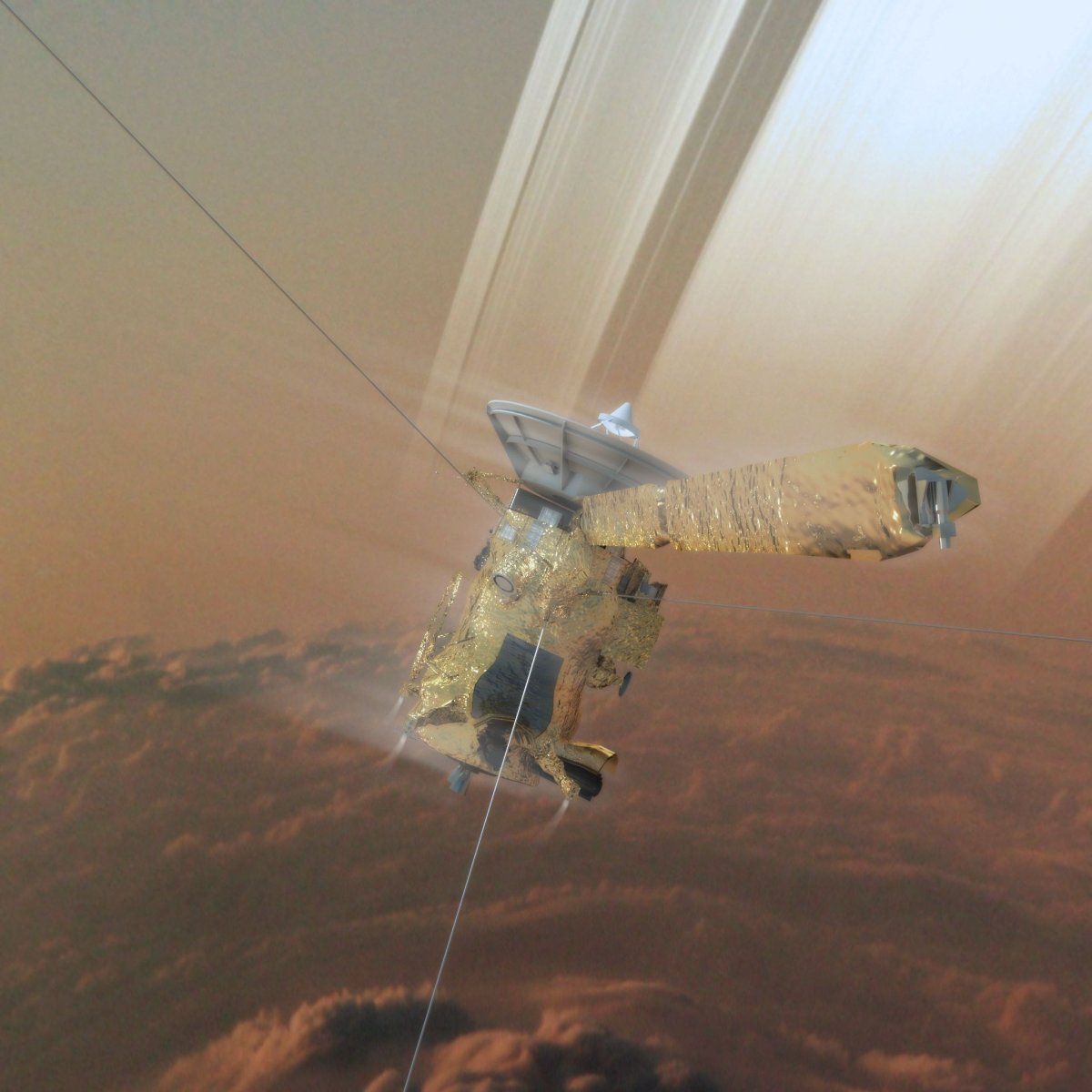
If you are taking a trip to Saturn this weekend, don't forget to bring an umbrella—and a flashlight. Scientists have discovered that Saturn's rings cast shadows over the planet and may produce a kind of rain.
Research published in Science reports the first findings from Cassini's recent Grand Finale death tour. The study analyzed the make-up of Saturn's ionosphere—a segment of the upper atmosphere filled with particles that have acquired a magnetic charge.
Strange variations in the cold and dense ionosphere mystified researchers, who have proposed a number of explanations for its surprisingly dynamic activity. In addition to vast clouds cast by Saturn's rings, the weird ionic behavior might be explained by powerful winds and icy "ring rain."
"These are the first direct observations of Saturn's topside ionosphere—as opposed to remote sensing observations," study author William Kurth told Newsweek.
The research is "the first of likely dozens of studies of Saturn's ionosphere and its interactions with the ring system," according to Kurth, a research scientist at the University of Iowa in Iowa City. The observations are the direct result of the last weeks of NASA's years-long exploration of Saturn. "This is only possible because of the addition of the Grand Finale phase to the Cassini mission," said Kurth.

Launched in 1997, Cassini entered into orbit around Saturn in 2004. After 13 years in orbit, operators retired the veteran spacecraft earlier this year by sending it into the planet. You can watch the full video of Cassini's dive into oblivion here.
During its Grand Finale tour, Cassini passed between Saturn and its rings 22 times—beaming radio wave, plasma wave, ionic, dust and magnetic data down to earth. Analyses of the information show that the ionic field of charged particles around Saturn interacts with its enormous rings. Certain patches of the field are particularly dense, and shadows from the rings could be the reason why. As the massive rings block extreme UV light from the sun, fewer particles acquire a magnetic charge.
Weather on Saturn

But shadows are not enough to explain the variation observed by Cassini, the scientists report. They theorize that rain and wind may also be contributing to the activity.
Saturn's rings are mostly made of ice. Tiny water particles could be traveling along magnetic lines from the rings to the atmosphere. Strong atmospheric winds could also be shifting the balance of ionic particles.
This report is not the first time ring rain has been proposed as an explanation for mysterious radio signals. In fact, scientists have been aware of the possibility since at least 2013. However, they are certainly not a given.
"I think the jury is out on ring rain," Kurth tells Newsweek. "Radio and plasma wave observations—coupled with others—will ultimately shed light on this."
Cassini's last—and lasting—legacy

The paper barely scratches the surface of the vast amount of data collected by Cassini on its final descent, according to Kurth. As well as shedding light on Saturn, for example, it has scoured the planet's moons.
"Our eventual understanding of Saturn's ionosphere and its interactions with the rings will be made possible by the fabulous array of measurements afforded by Cassini," Kurth says. He expects the analyses to continue for decades. "New questions will come from these studies and provide the basis for possible return missions to the Saturnian system."
Uncommon Knowledge
Newsweek is committed to challenging conventional wisdom and finding connections in the search for common ground.
Newsweek is committed to challenging conventional wisdom and finding connections in the search for common ground.
About the writer
Katherine Hignett is a reporter based in London. She currently covers current affairs, health and science. Prior to joining Newsweek ... Read more
To read how Newsweek uses AI as a newsroom tool, Click here.








